The two-blue-carriage Scot Rail train runs on the line from Inverness to the Kyle of Lochalsh, at the foot of the road bridge across to Skye, so its survival seems assured, and thus it is a valuable lifeline for anyone using the pretty little village just two stops going east; Plockton.
We waited on the platform, for the 6.26am journey to the big city, with the enthusiasm of two kids. It was Rob’s idea and he did all the online ticket booking so for me it was the start of a real day out.
We trundled along misty mountain valleys and alongside lochs, red deer looking up to watch our passage and lambs, still fearful, rushed away from the cosy field-side next to the track where they’d spent the night while their mums nibbled grass ignoring us.
Rob had downloaded an audio tour on his phone which we followed in our own time. It was great as it took us not only through the interesting sights in this compact town centre but also a few hundred metres up the River Ness, through Victorian gardens and beside fly fishing men in their waders, full of hope.
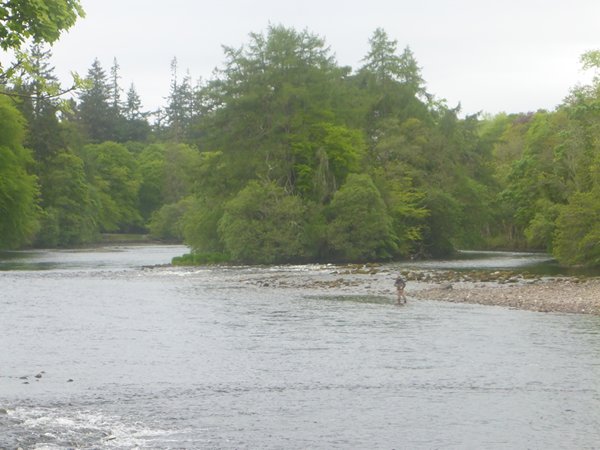
Macbeth apparently built the first castle and there has been one on Castle Hill ever since. There was a stone castle in place in the 12th century and Robert the Bruce recaptured it from the English governors in 1307.
The fifteenth century was a turbulent time with James I exacerbating relations with the Highland Chiefs by executing three of them on site and Mary Queen of Scots didn’t help in September 1562 when she had the Captain beheaded because he wouldn’t allow her entry in the absence of the English Governor.
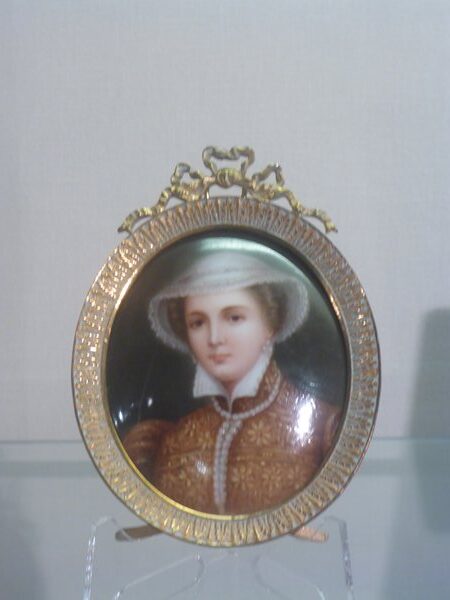
In 1745, the year before Culloden, the castle was an English garrison but as the rivalries heated up Lord Loudon retreated in 1746 allowing Bonnie Prince Charlie to retake the castle and promptly raze the fortifications to the ground with explosives.
Rebuilding of the red sandstone started in the nineteenth century and today it is closed to Scots and Brits and everyone else while a new tourist centre is built within. As impenetrable as ever!
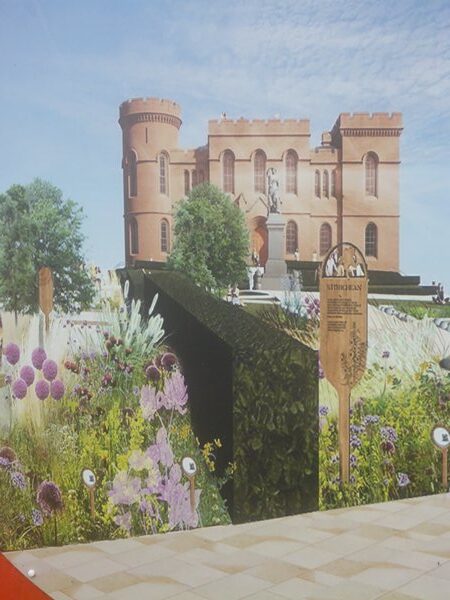
After lunch at the Wetherspoons ‘Highlander Way’ we couldn’t resist a chilly ride out on the open top tourist bus to a set of locks on the Caledonian Canal and on our return to the city, we did a really childish thing. I find it hard to resist a ‘traditional’ sweet shop and my favourite childhood sweets were pineapple chunks, Rob’s were cherry pips; so, we now have both, plus some sherbet lemons for diversity, on the saloon table to remind us of our lovely day in Inverness.
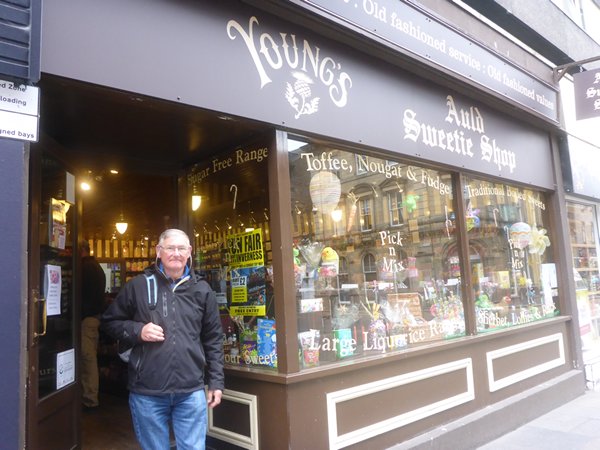
On the two-hour twenty-minute train ride home we were in for a rare sighting. Once past the monoculture fields of yellow rape, the moody mountains loomed in the distance, with the shy sun occasionally casting silver over the loch water, when a sea eagle took off close to the train. That sort of thing makes my day.
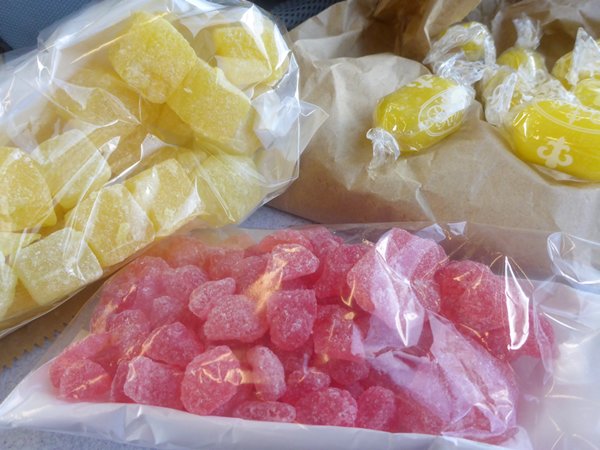
The beautiful vessel moored next to us on our return is Gordonstoun School’s 80-foot Oyster, ‘Ocean Spirit of Moray’, exactly twice as long as Zoonie and six years younger. We were in good company.
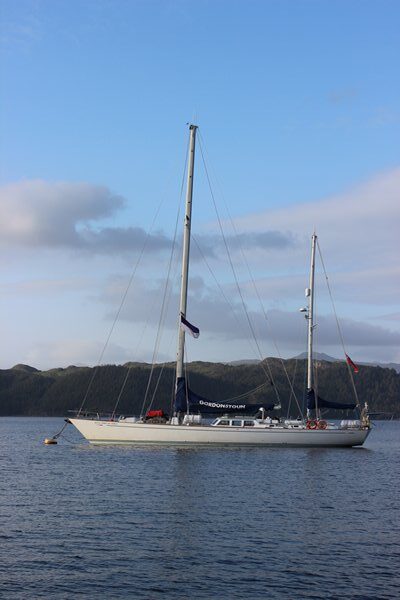
Our second treat while here as you can imagine was a train and bus ride to visit Eilean Donan Castle. My mission, to buy sufficient tins of Scottish shortbread, with the picture of the castle on the front, to go around the family and replace the one I remember from my childhood, that my mum used to use when she made us shortbread. We bought five tins for family and ourselves!
Each journey by train and then number 915 bus was only about fifteen minutes long, but what we thought might be a problem came when the train was thirteen minutes late, leaving us with minus three minutes to catch the bus at the layby, estimated on Google Maps to take ten minutes by foot to reach. I can run fast if I have to, but not that fast.
Hmm, we thought, maybe the bus will be late too. The taxi driver confirmed our hopes and we arrived just as the driver was loading the last of the baggage onto the City Link coach.
My first, brief impression was of a grey and imposing set of buildings; the grey sky didn’t help, but the warmth of the welcome and the fact the MacRae family still come and stay in the restored servants’ quarters on a regular basis soon changed that.

First built, where Lochs Long, Alsh and Duich meet, in the same age as Inverness Castle and sharing the same historical events, it was love and inspiration that led to the 1912-1932 complete restoration carried out by Lieutenant Colonel John MacRae-Gilstrap, his talented wife, Ella, Clerk of Works, Farquhar MacRae, who had a dream of how the castle should look, architect George Mackie Watson, and their hard-working team that brought the historical landmark into modern times.
We entered over the twentieth century bridge, to look into much of the castle itself and I was amazed at how everyday are much of the furniture and artefacts. Willow pattern plates with the same pattern my brother found on one he uncovered while excavating for a new milking parlour. China mixing bowls the same as my mother used. Nineteenth century dining chairs similar to ours at home and the rack of cannon balls reminded me of the two I found in my garden in Yarmouth on the Isle of Wight and I really must research their origins.

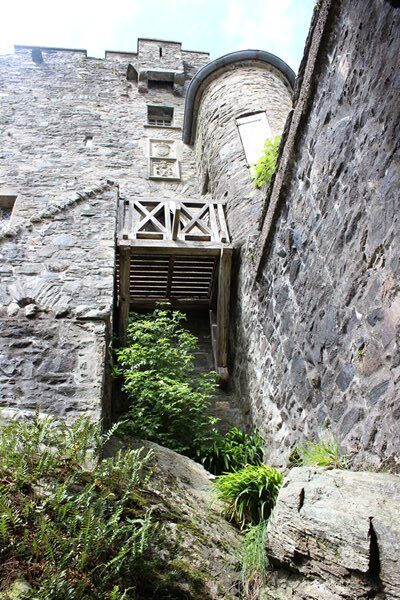
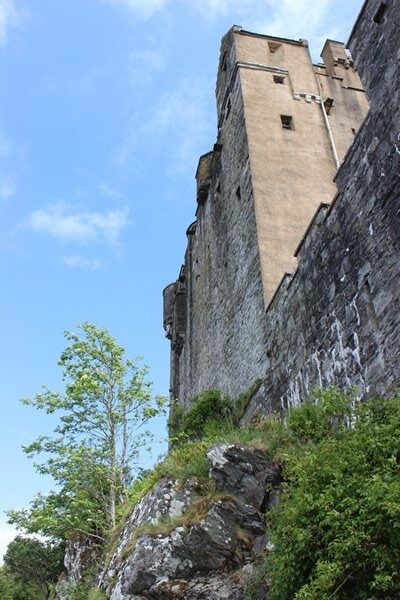
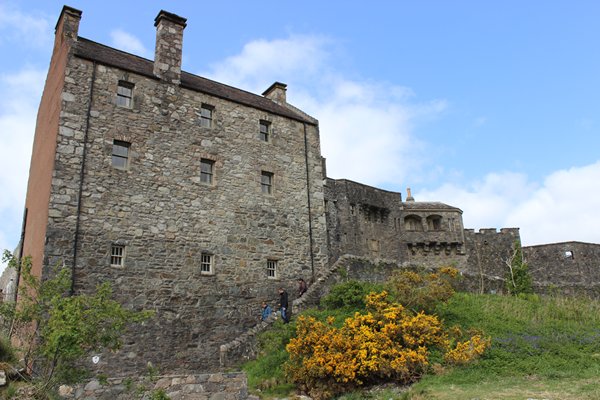
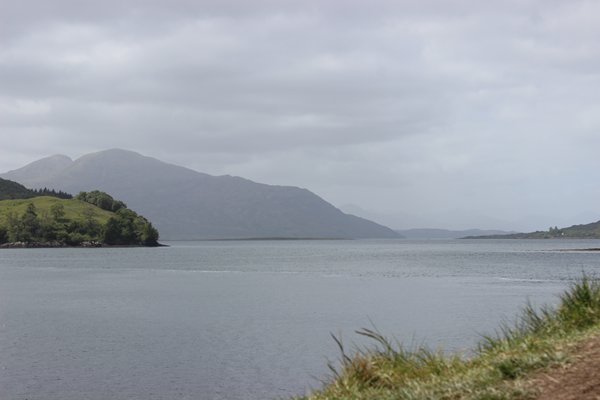
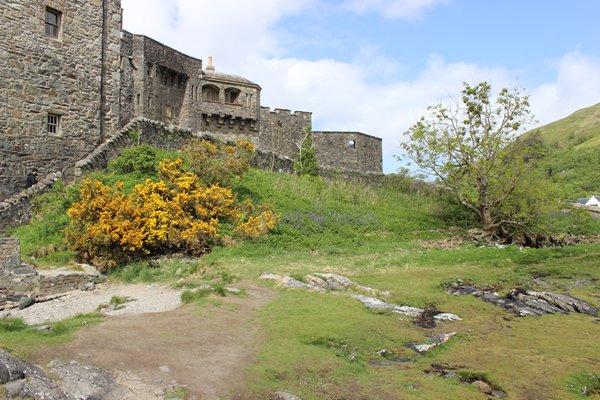

The presence of Clan MacRae pipe drums, fifes and bagpipes, tartan clothing and carpet fabric, oil paintings of the family and two eighteenth century dresses, altered and worn at balls until recently, all added to the rich culture of the MacRae family, that is now part of a vast diaspora of family living all over the world; including our generous friend, Mark MacRae who helped us settle into Covid lockdown while we were in South West Australia on our circumnavigation.